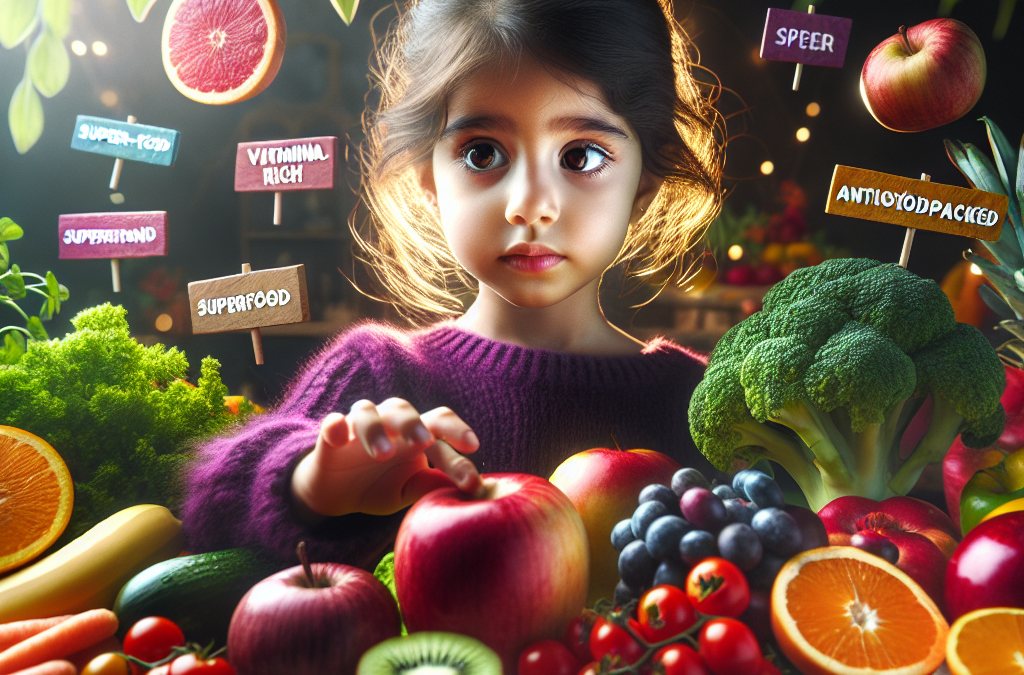As a parent, there’s nothing more important to me than ensuring my kids are happy and healthy. One way I’ve found to support their immune systems is by incorporating superfoods into their diets. These power-packed foods are not only nutritious but also add a burst of flavor that my kids love. In this article, I’ll share five major areas I’ve focused on when it comes to using superfoods to enhance my children’s immunity.
Understanding Superfoods
What are Superfoods?
Superfoods are nutrient-rich foods considered to be especially beneficial for health and well-being. Defined more by the buzz surrounding them than by hard science, these foods can pack a serious punch when it comes to vitamins, minerals, and antioxidants.
Your typical superfood might include fruits like blueberries or vegetables such as kale, but the term can also encompass whole grains, nuts, seeds, and other lesser-known gems from around the world. It’s all about understanding the nutrients they provide and how they can help bolster our kids’ defenses against illness.
I’ve found that referring to them as “super” makes it easier to get my kids excited about trying them. They feel like they’re getting special food that helps their bodies, and that makes a world of difference in their willingness to try new dishes!
Incorporating Superfoods into Meals
Creative Smoothies
One of my all-time favorite ways to include superfoods is through smoothies. My blender is my best friend in the kitchen! I toss in spinach, bananas, and a handful of berries with some yogurt or almond milk. The result? A deliciously creamy drink that my kids adore.
Adding superfoods like chia seeds or flaxseed gives their smoothies an extra boost of omega-3 fatty acids, which supports brain health and immunity. The cherry on top is that my kiddos think they’re just enjoying a fun snack!
Sometimes, I even let them pick their own ingredients. This turns the smoothie-making process into a little adventure while helping them learn about healthy eating. It’s a win-win!
Healthy Breakfast Ideas
Breakfast is the most important meal of the day, and it’s the perfect time to sneak in superfoods. I love making oatmeal topped with fresh fruits, nuts, and a sprinkle of cinnamon. Each ingredient has its own set of health benefits.
Quinoa bowls with eggs and mixed veggies are another delightful option that I’ve introduced. Using quinoa instead of regular cereal gives my kids a hearty boost of protein and fiber to start their day. Plus, who doesn’t love a savory breakfast?
We even experiment with pancakes! By substituting some of the regular flour with almond flour or adding in mashed bananas, we turn ordinary pancakes into superfood-packed delights with each bite, leaving my kids smiling and satisfied.
Snacking Wisely
Nutritious Snack Alternatives
Snacking can often derail healthy eating, but I’ve learned that providing them with nourishing options can create a positive impact. We’ve switched out chips for kale chips or homemade granola bars packed with oats, seeds, and dried fruits.
I find that when I involve my kids in the process—like making granola together—they’re way more likely to munch on what we’ve created. Plus, it gives us some quality bonding time in the kitchen.
And, let’s not forget about popcorn! It can be a great spot to sprinkle in nutritional yeast for extra flavor and B vitamins, transforming it into a fantastic dip for movie nights.
Creating a Superfood Platter
On days when I want to encourage the kids to try different foods, I lay out a superfood platter. I include colorful fruits, veggies, nuts, and dips like hummus or guacamole. It becomes a feast of options, and I’ve noticed they are more likely to sample new things when they can choose.
Involving them in the creation of these platters helps them connect with the food on a personal level. They get to see the vibrant colors and interesting textures, which can intrigue even the pickiest eaters.
Sometimes, it feels like a mini art project, and if they’ve created it themselves, they’re a lot more willing to taste. It’s all about making healthy eating fun and interactive!
Educating About Nutrients
Involving Kids in Nutrition Discussions
Education goes a long way when it comes to food. I talk to my children about what each superfood does for their bodies. It’s not just about eating healthy; it’s about understanding why we eat healthy.
Get an Amazing Discount on the Best Certified Organic Whole Food Supplement!
We’ve turned learning about nutrients into little games. For instance, when we try a new fruit or vegetable, I ask them to help me search for its benefits online. They feel empowered to learn and discover, making them more likely to engage in healthier eating habits.
Talking openly about nutrients helps demystify food and fosters their autonomy in making healthy choices. We talk about things like vitamin C in oranges for fighting colds, or how spinach can make us strong, just like Popeye!
Setting an Example
As parents, leading by example is one of the most effective teaching methods. I make sure to incorporate superfoods into my own diet, showing my kids that I practice what I preach.
When they see me enjoying a salad or a smoothie, they start to associate these foods with positive experiences. It creates a family culture that values healthy eating and opens the door to conversations about food choices.
I also model mindfulness around food by enjoying meals without distractions, emphasizing the importance of being present with our meals, which is an invaluable habit they can carry into adulthood.
Making It Fun
Engaging Cooking Sessions
Cooking together can be one of the most fun ways to promote good nutrition. I’ve made it a tradition to have “family cooking nights” where we prepare our meals together. Kids love getting messy and hands-on with food.
By letting my kids pick a recipe that features superfoods, they feel a sense of ownership and excitement. It’s like an adventure each time we explore new cuisines! Plus, they learn important life skills and gain confidence in the kitchen.
Sometimes, we even try to theme our cooking nights around a certain country or region, introducing them to different tastes around the world while sneaking in those superfoods!
Fun Food Presentation
How food looks can significantly affect how kids perceive it. I often focus on creating colorful and visually appealing plates. A vibrant salad looks like a work of art on its own! Using cookie cutters to create fun shapes can also add that touch of excitement.
We also play games, like creating stories featuring “superfood superheroes,” complete with costumes made from our fruits and veggies. It’s all about engaging their imaginations while instilling healthy habits.
This playful approach to food encourages them to not only consume more superfoods but enjoy the process of eating as well. Making it colorful and fun often leads to more meaningful connections with tasty, healthful meals!
Conclusion
Incorporating superfoods into my children’s routine has not only bolstered their immune systems but has transformed our meals into experiences of learning and bonding. The key is to keep it fun, exciting, and educational. I hope my share helps you discover how easy and delightful it can be to boost your child’s health with a dash of creativity and a sprinkle of superfoods!
FAQ
1. What are some examples of superfoods for children?
Examples of superfoods include blueberries, spinach, sweet potatoes, quinoa, and chia seeds. They are packed with essential vitamins and nutrients that support overall health.
2. How can I make healthy snacks more appealing to my kids?
Get creative! Try making fun shapes with fruits and veggies, or let them help you make homemade granola or energy bites. Making snacks interactive and visually appealing can really help.
3. Are there any superfoods to avoid for children?
While superfoods are beneficial, always consider allergies and preferences. Some kids may be sensitive to certain foods like nuts or gluten. It’s essential to cater to their needs.
4. How do I talk to my kids about nutrition?
Engage your children in discussions about where food comes from and its benefits. Turn learning into games or friendly competitions about who can name or guess the health benefits of various foods.
5. Can superfoods replace regular meals?
Superfoods are best when integrated into a balanced diet. They should enhance regular meals rather than replace them entirely. Variety is key in ensuring all nutrient requirements are met!




